It is confession time.
We used First Language Lessons this year for our language study.
We also used Language Lessons for the Very Young 1.
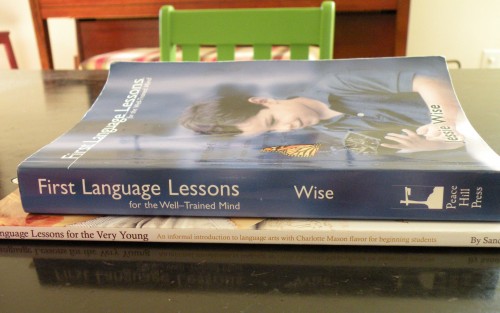
I had decided to use First Language Lessons when I saw the picture studies in Language Lessons for the Very Young 1. The gorgeous, full-color reproductions of real art containing child-friendly subjects drew me in. I ordered it, but I did so with no intentions of abandoning the copy of First Language Lessons that was already in my possession.
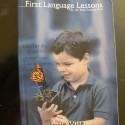
First Language Lessons is complete and methodical, covering nouns, common nouns,
proper nouns, the four uses of verbs, the four types of sentences, along with several essential topics such as seasons, months, and days of the week. The text also discusses the use of capitalization and end punctuation. The lessons are cyclical. A new topic is covered and then the old ones are reviewed. In addition, it includes some copywork and a couple of black and white drawings for picture study. It provides a complete early discussion of grammar topics in an adequate, appropriate manner.
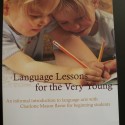
Language Lessons for the Very Young 1 is gentle but also complete, covering capitalization in poems and sentences, nouns, identifying the subject and predicate of the sentence, singular and plural nouns, a vowel and consonant review, use of ‘a’ and ‘an,’ common and proper nouns, action verbs, identifying complete and incomplete sentences, and end punctuation. New subjects are continually introduced, but there is plenty of review. The lessons are very short, in keeping with the Charlotte Mason method, so though there are 180 lessons the book is easily completed in a year. The text also contains six poems for copywork and memorization, each taking at least as many days to complete as there are stanzas in the poem, and six pieces of art work for picture study and follow-up discussion. The lessons are integrated, so that poems, pictures, narrations, and grammar complement and complete each other.
The differences in the two books are subtle. FLL uses parts of speech to build a grammar discussion, while LLVY begins with the sentence and progresses from there. There are fewer lessons in FLL, but the length of LLVY is deceiving as it contains several series of lessons in which the student copies one stanza of a multi-stanza poem. FLL contains a more focused, informative explanation of verbs, discussing the four categories of verbs with precision. LLVY, on the other hand, covers the creation of sentences and the use of punctuation in more detail. While both texts use poems for copywork and memorization, FLL utilizes shorter, nursery-rhyme-ish poems and LLVY uses longer, more intense selections. Both also include picture studies, but LLVY provides lovely, full color reproductions of art, while FLL includes only non-descript pencil drawings. FLL costs $18.95 and is intended for use over two years of study, while LLVY covers one year and costs $22.95.
Another difference in the two books is that one is a classical text and the other is
a Charlotte Mason text. It is easy to discern Charlotte Mason’s methodology in the poetry, copywork, and picture studies included in LLVY. It is more difficult to recognize the parts to whole discussion of grammar that evolves in FLL’s continuum from nouns, pronouns, and verbs to sentences, as compared to the use of the whole, sentences, to derive the parts in LLVY.
Both texts complete the objective of teaching grammar gently and completely to a young audience. Though they use different methodologies and end with slightly different products, these two early elementary grammar texts are both excellent and useful.
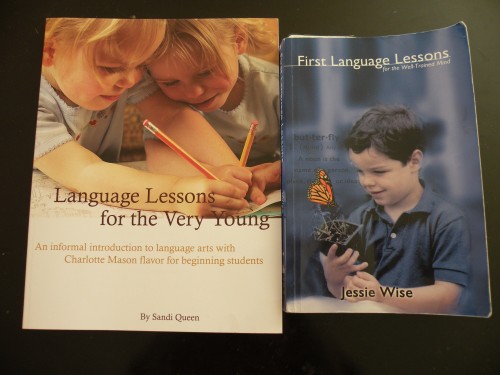
Personally, though I know that it was not necessary, I liked it. Because the two books approached grammar from somewhat oppposite directions, I was able to effortlessly review and test her grammar knowledge retention over a school year and with two different approaches. So, when she demonstrated knowledge, it was knowledge of grammar, not just understanding of a program and how it worked.
First Language Lessons and Language Lessons for the Very Young 1 utilize different methods to reach a common purpose. I am delighted to recommend both of them (seperately or together) to you for your grammar needs!
Most days find Susan on the couch reading to her children, in the floor “playing” math, and generally in the middle of a good-sized mess. A love for the Lord, a love for her little ones, and a love of learning have led Susan and that wonderful man she married to an educational philosophy that is Well-Trained Mind-inspired classical and Charlotte Mason, with a touch of the traditional.
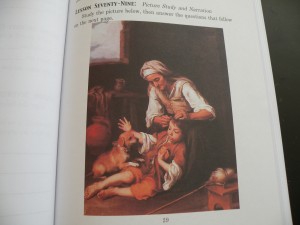
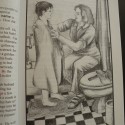
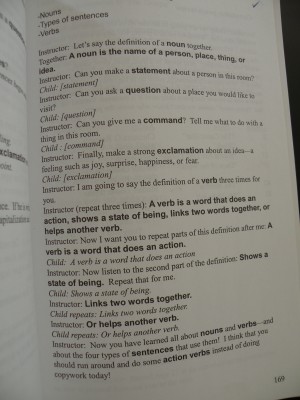
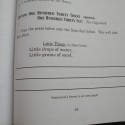

We love all of Queen Homeschool products. We did use two years of her Language Arts Curriculum and have now moved on to Easy Grammar in her 6th grade year. Loved the copywork, picture studies, and short lessons.
Blessings
Diane
.-= Diane´s last blog ..Creating – Getting Back on Track =-.
We used the Queen books for 1st and 2nd grade. My now 8 year old son loved them. He would ask for more and really wanted to skip ahead to the next picture study (which I made him wait for 🙂 ) We did not use the copywork for handwriting though. I used it for listening enjoyment, or to review past topics… kind of a seek and find game.
.-= Christie´s last blog ..TED: Adora Svitak =-.
Excellent review! We used Queen’s LL for the first time this past year and my boys loved it. I wonder at times if the gentle approach is “enough” though. I’ve also been wondering about FLL, so thanks for your take on both!
.-= Michelle´s last blog ..My Blue Boat =-.
I’m so glad to read this review! I recently bought the workbook version of Bauer’s First Language Lessons (Writing with Ease Level 1) but we plan to use the Charlotte Mason approach so I was hesitant about it. I’d looked at Sandi Queen’s materials before, but I’m having a hard time placing my daughter. She’s a rising “first grader” and will be doing a Year 1, but she is reading fluently. I’m glad to see that you chose the Very Young lessons, I’m considering ordering those and we’ll see what is a better fit for her.
I was referred to this blog by a friend because I have been asking about the same 2 curriculum! Thank you for a candid post. I will be following from now on 🙂
Hi Susan,
I just came across this post today. I have been looking at both of these curriculums for the last 3 days. I too have an 8 yr old son going into 3rd grade, a 7 yr old son going into 2nd and a beautiful 5 1/2 yr old daughter going into Kindergarten but reading way past 1st grade level. I just can’t make a final decision on which book is best for us. I will already be introducing a new Bible History Program called Connecting with History or History Links as our core program this year. The boys really don’t like doing workbooks, but I really loved the sample pages for Language Lessons that I viewed online. So many choices and decisions, my mind is going to explode. I need to pray about it some more. Thanks for your review and post, it is greatly appreciated.
Peace and Joy,
Mary Frances
Hello,
I know you wrote this post quite awhile ago, but I just came across it today while looking for reviews on First Language Lessons. Both of these now sound really interesting to me! Thanks for introducing me to LLVY! I’m wondering how long each lesson takes for each program? I have a very wiggly little boy and I’m trying to decide how long he’d be sitting for this lesson each day. Is one program significantly shorter than the other? Any ideas about lesson length would be greatly appreciated! Thanks!
I’m so glad you wrote this review. I used First Language Lessons Vol 1 with my daughter this year and it went so well that I have to continue using it. But I also was given a copy of Language Lessons for the Very Young from a friend and I love that approach too. So I’ve been planning on using FLL 2 next year along with Language Lessons fro the Very Young. Oh, and she’ll only be 6 next year (but she reads at like a 5th grade level already). I always have this ridiculous fear of people’s “gasps”. I’m such a mean mom cuddling on the couch “forcing” my young child into “formal” schoolwork. Thank you for your affirmation.
I know this post is many years old, but I cam across it today as I’m starting to lay out our plans for the next year. We are going to be using Writing With Ease as well as All About Reading. Would it be overkill to add one of these programs in as well? I have a 6 year old who is a rising 1st grader. We just recently pulled him out of private school and as I’ve been working with him, I’ve realized just how far behind he is in simple things, but he is so smart he is catching on very fast. Thank you for all your insight!